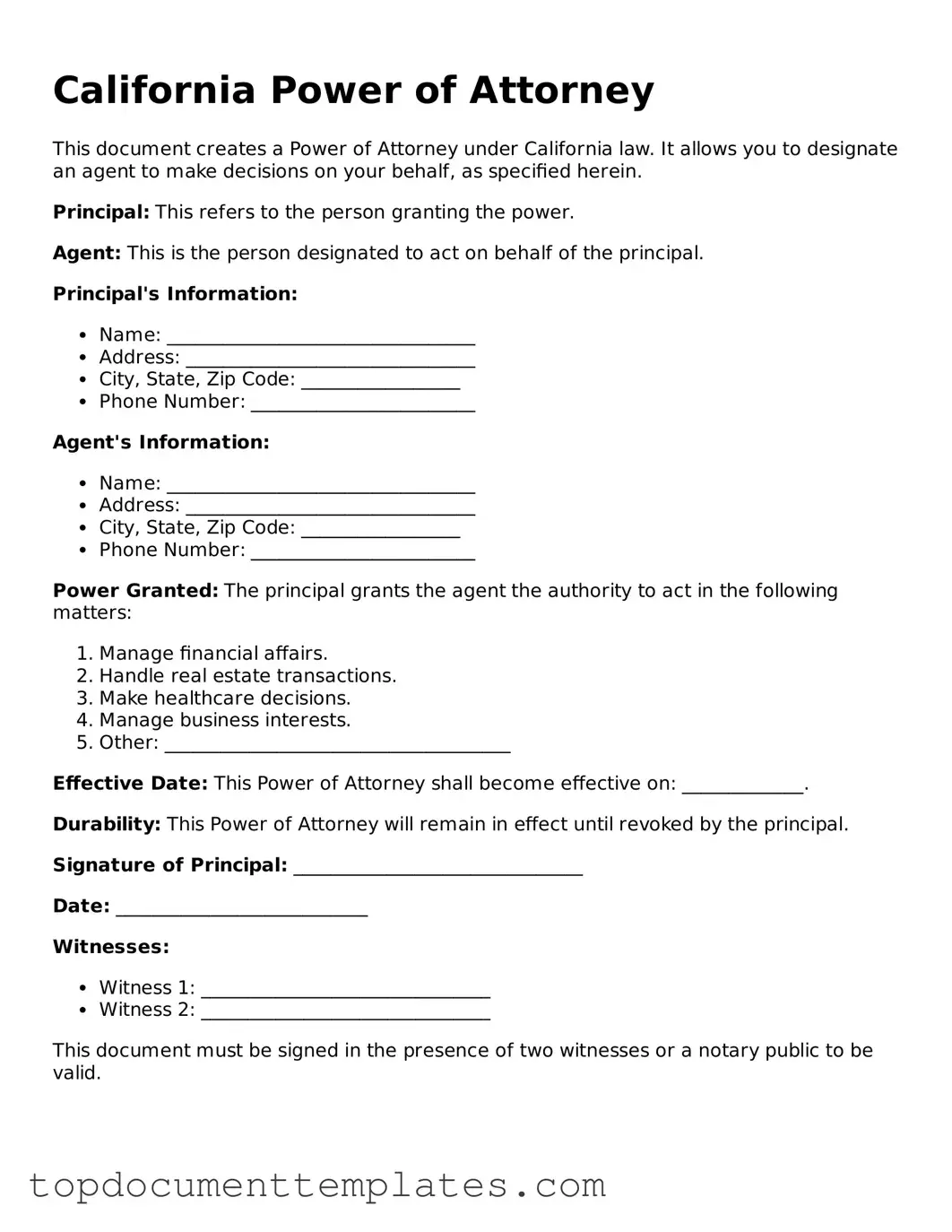In California, the Power of Attorney form is a crucial legal document that empowers individuals to designate someone they trust to make decisions on their behalf. This form can cover various aspects of life, including financial matters, healthcare choices, and real estate transactions. By granting authority through this document, individuals can ensure their wishes are respected even if they become unable to communicate them directly. The form can be tailored to be broad or limited, depending on the needs of the person granting the power. Additionally, it is essential to understand the different types of Power of Attorney available, such as Durable Power of Attorney, which remains effective even if the person becomes incapacitated. Understanding the nuances of this document can provide peace of mind, knowing that your affairs will be managed according to your preferences. As life circumstances change, having a Power of Attorney in place can be a vital step in safeguarding your interests and ensuring that your voice is heard when it matters most.
